The Cummins diesel engine has powered Dodge Ram pickups since ’89. Despite its legend, there are some issues to be aware of.
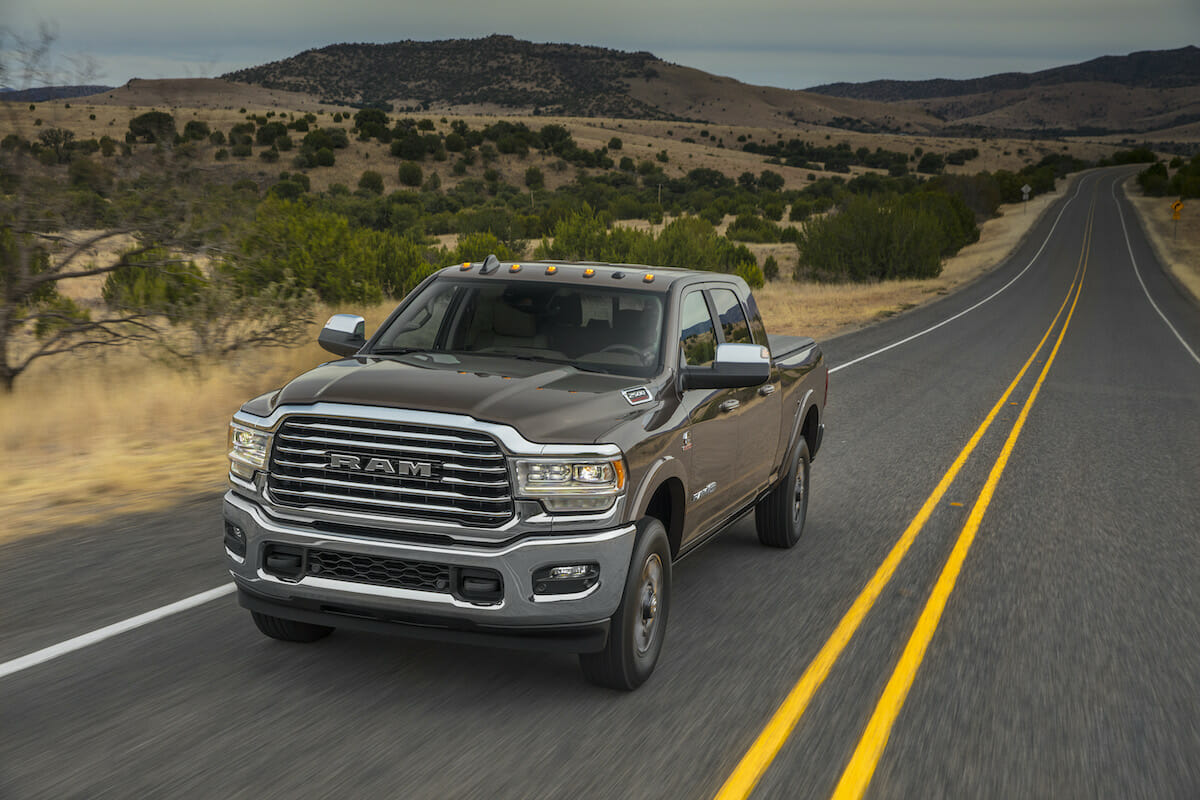
Originally an agricultural engine, the Cummins B-series also powers many box trucks and school buses. A distinctive sound, outstanding durability, and an ability to be tuned for enormous power and torque have made these inline sixes well-loved.
Like Henry Ford, Clessie Cummins was a midwestern farm boy who had a talent for machinery and a drive to make the drudgery of farm work more efficient. Cummins proved his engineering skills as a mechanic on the racing circuit, winning the first Indianapolis 500 in 1911 as one of Ray Harroun‘s mechanics.
In 1952, a Cummins diesel race car sat on a pole position for the Indianapolis 500. A true American maverick who stuck to his ideas even when others did not believe in diesel technology, Cummins started an enterprise that grew into a 34,000 employee company with operations in almost 200 countries around the world.
When looking at these trucks for purchase and considering which years to avoid, the first thing to think about is which Cummins motor the truck has. Beginning in 1989, three versions of B-Series have been offered across four generations of Rams.
These are strong motors, both in terms of their capability to endure major mileages and being able to survive hot-rodding. The drivetrain will typically far outlast the rest of the truck, but for each generation of Cummins, there have been certain reliability issues.
The original 5.9 liter 12-valve is loved for its overbuilt nature and mechanical fuel delivery. They have also been revered by hot-rodders for many years because they do not have any emissions equipment.
The next generation B-Series has 24 valves and electronic fuel injection, which yielded better performance and emissions, but had issues with the injection pump and cracking valve seats.
The third generation raised displacement to 6.7 liters, delivering more power and torque, but this generation of Cummins experiences issues with its variable geometry turbo. There is also a significant problem with emissions equipment, which can put 6.7-liter Cummins Rams into limp mode. However, each of these issues can be avoided or overcome if you know what to look for.
In the 30 years since their release, Ram pickup bodies have gotten progressively larger, with more extended and crew cab trucks coming onto the market.
In the real world, this can make parking an issue, since most Cummins-engined Rams are too big for typical parking spots and too tall for many multi-story car parks. Being a heavy-duty truck with stiff springs for heavy loads, the ride can be quite rough.
Although, diesel engines can provide a smoother ride than equivalent gas-powered trucks just for the fact they often weigh substantially less. Late-model trucks feature far more luxuries than previous models, rivaling many premium brand cars.
Due to the hot-rodding potential of each of these trucks and how many have had emissions equipment deleted, unusual caution is required when shopping for Cummins Rams. This article covers four generations of Dodge trucks with Cummins diesel engines, noting significant reliability issues and recalls, as well as highlighting which years are best avoided.
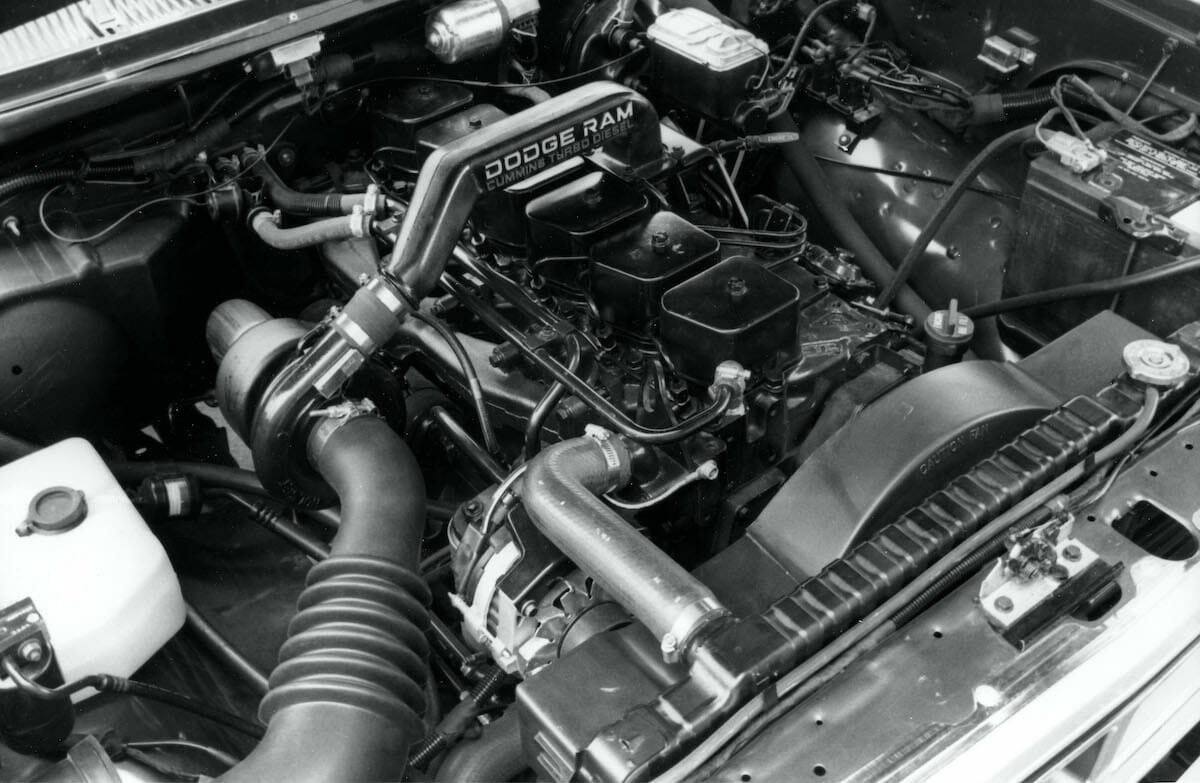
Dodge Cummins: First-generation (1989-1994)
The first Cummins Ram was launched in 1989 as an option on 250 and 350 series pickups. The headline power figure for the Cummins was not impressive, at only 160 hp, but the important figure was the torque, which at 400 lb.-ft. was far more than any gas motor available in a Ram at this time.
Better yet, compared with gas motors, the diesel offered significantly improved fuel mileage. The Cummins had both a turbo and direct injection, while the contemporary Ford and Chevy trucks did not, meaning the engine did not need glow plugs and thus was more reliable. Available transmissions were the venerable Mopar 727 automatic and a five-speed manual.
This era of Ram suffered from a dated design, since the basic design of the cab had entered production in 1972. The interior had received few updates since its introduction in 1980, although ABS anti-lock brakes became standard on Rams in 1989. The grille was redesigned for 1991, retaining rectangular headlamps and crossbar grille.
The Cummins B-Series engine had entered production in 1984, first in Rocky Mount, North Carolina, and then in Mexico, Turkey, and England. B-Series bores are machined directly into the block, rather than using wet liners, they use a one-piece cylinder head.
Commonly called the 12-valve to differentiate it from the later 24-valve, the name refers to the design of the cylinder head, 12-valve trucks having the traditional one inlet valve and one exhaust valve, while 24 valve motors have two inlet and two exhaust valves.
These early 12-valve Cummins motors used the P7100 fuel pump, known as the “P pump.” This mechanical device can be rebuilt and modified, and it is this which allows hot rodding for enormous power.
A common issue to look out for with 12-valve and 24 valve Dodges with Cummins motors is the “Killer Dowl Pin”. This is a steel pin that gets pressed into the engine block and sits above the timing gear. This pin can back out of its hole and fall into the timing gear, with catastrophic results for the rest of the engine. Fixes are available, and any buyer of one of these trucks should check this work has been done.
Another thing to pay special attention to when you are looking at Dodge Cummins trucks is to make sure you see the truck start from cold since a worn-out diesel engine will often struggle to cold-start. This is a good reason to arrive early when you go and see a used truck, as you might catch the seller trying to warm it up to hide the issue.
Under the hood, you can expect some oil residue and dirt on higher mileage vehicles, and you can use this to check for oil leaks from the block. Inspect the block closely, looking for any clean streaks, since that will show you if any oil has been leaking recently. Check compression is still strong by testing for blow-by. This is done by removing the oil filler cap and while the engine is running, and looking for smoke coming from the oil filler hole.
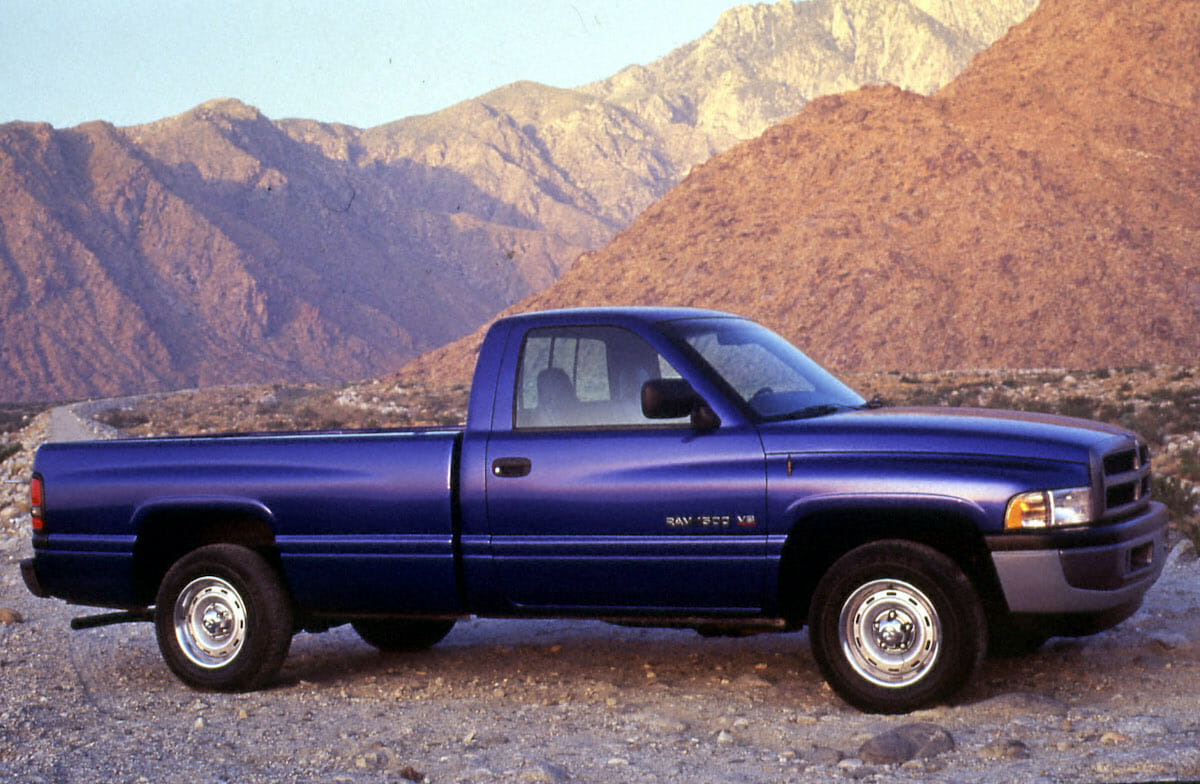
Dodge Cummins: Second-generation (1994-1998)
An all-new body style of Ram was launched in 1994, and this design probably began the current trend for huge, aggressive-looking pickups. Featuring a raised hood line and low fenders, the Ram looked similar to an eighteen-wheeler semi-truck and sold very well.
The 12-valve Cummins model remained a key offering, available in the larger 2500 and 3500 models. For 1994, the Cummins made 175 hp and 420 lb.-ft. with the manual transmission, and 160 hp and 400 lb.-ft. with the automatic. Between 1996 and 1998, this increased to 215 hp and 440 lb.-ft. in the manual, and 180 hp and 420 lb.-ft. with the automatic.
Cummins-powered Rams of this period used the A618/47RH transmission in 1994 and 1995, while the 618/47RE was used from 1996 through 2002, driving through Dana 70 and 80 axles.
Introduction of the Cummins 24 Valve (1998-2003)
Dodge introduced a new version of the Cummins-powered Ram in 1998. Called the ISB (Interact System, B Series) the name represents the fact that the engine uses electronic fuel injection. This was done to reduce emissions. The other main difference was the 24 valve cylinder head. Manual transmission trucks made 235 hp and 460 lb.-ft., while automatics made 215 hp and 420 lb.-ft. in 1998, 1999, and 2000 model years.
For 2001 and 2002, two versions of the engine were offered, one with 235 hp and 460 lb.-ft. and a High Output version making 245 hp and 505 lb.-ft. The High Output version had a higher compression ratio (17.3:1), powdered metal valve seat inserts, and a bigger flywheel. The fuel system was developed to flow more fuel. It was only available with the new NV5600 six-speed manual transmission.
The 1998 changes included the introduction of the four-door Quad Cab, which used small clamshell doors directly behind the main doors, making Ram the first extended cab pickup to have four doors. Other changes for 1998 included a revised interior and dual airbags. Brakes were upgraded to dual-piston calipers at the front, and heated seats were an option on model year 2000 Rams.
The 24 valve uses Bosch injectors and a Bosch VP44 high-pressure fuel pump in place of the P7100. The VP44 is not as reliable as the P7100. Many Cummins enthusiasts recommend fitting aftermarket fuel pumps, perhaps an Airdog or a Fass.
Some Cummins-engined Rams from the 1999 and 2000 model years suffered from a casting defect that reportedly caused the engine block to fracture. These blocks can usually be spotted by a “53” cast into the side of the block. Dodge replaced a large number of these engines under warranty.
Additionally, the 24 valve cylinder head has proved less durable than the earlier 12-valve, experiencing valve seats cracking at higher mileages.
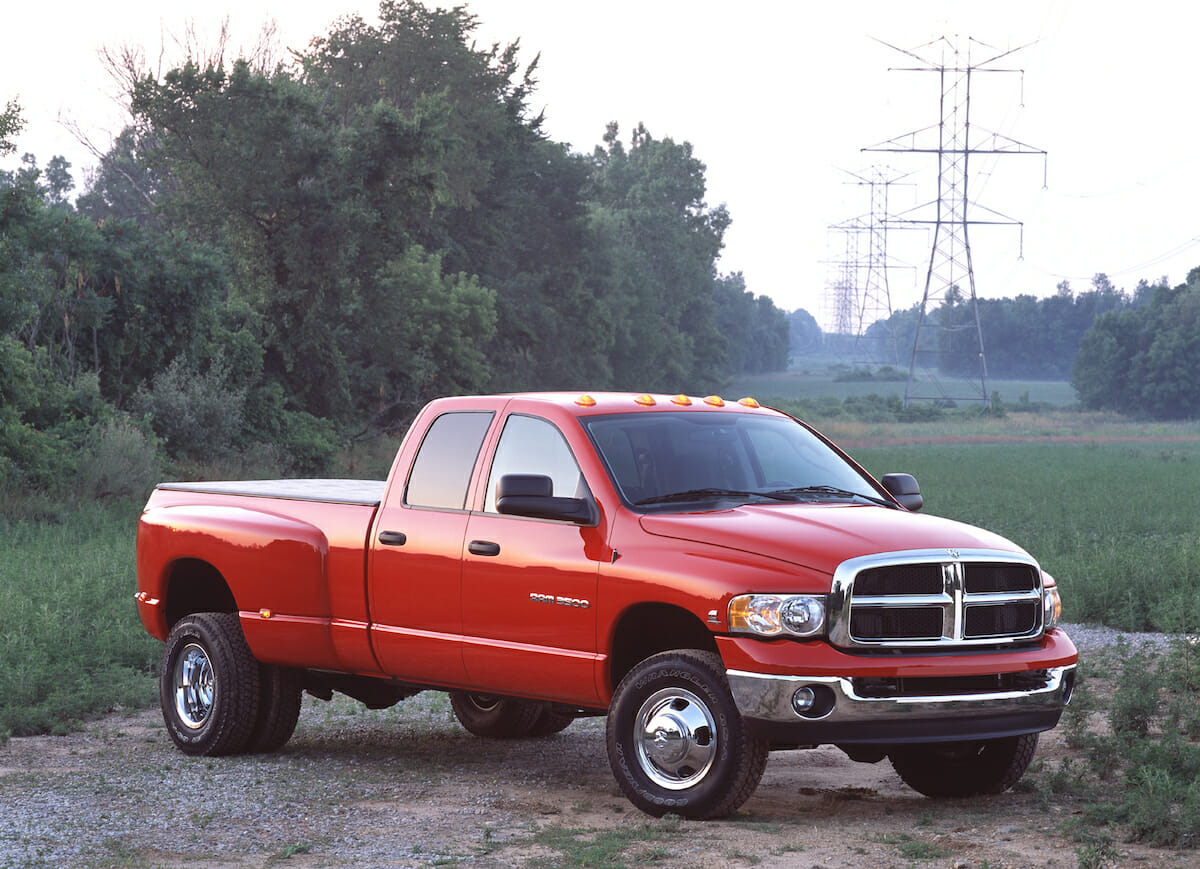
Ram Third-generation (2003-2008)
The 2003 redesign of the Ram included a new frame, suspension, interiors, and sheet metal. Styling was by Cliff Wilkins and was very much derived from the previous generation.
Rear-wheel drive 2500 and 3500 models had rack and pinion steering and independent front suspension. The new models were well received, and 2002 and 2003 saw record Ram sales of 450,000.
The 12 valve and 24 valve Cummins Rams share the same bore and stroke, and the same Holset turbo. The turbo can reliably tolerate massive increases in the engine’s power.
The new Cummins for 2003 now featured common rail injection and made 305 hp and 555 lb.-ft. During the 2004 model year, the High Output Cummins 600 was introduced, making 325 hp and 600 lb.-ft. of torque. A marine version of the 24 valve was also offered, designated the QSB.
On the transmission side, the 47RE automatic was upgraded internally to increase durability and torque capacity and was renamed the 48RE. It remained four-speed.
When looking at a 24-valve Cummins Ram, there are a few simple tests you can do to identify typical issues. See if you can have someone else start the truck so that you can be at the tailpipe.
Is there blue smoke? If so, that is oil, and it is very likely an injector or injector pump issue. While you are at the tailpipe, sniff the exhaust fumes. Can you smell anti-freeze? If so, the truck may have a head gasket problem. With the truck running, the idle should be smooth, and not pulsing. Gently rev the motor, up to about 2000 rpm, and then allow it to fall back to idle. The revs should rise and fall should smoothly. Any unevenness suggests a problem with the injectors or injector pump.
These later engines lack the enormous performance potential of a properly tuned 12 valve, but it is far easier to extract a limited amount of additional performance from the 24 valve engines. Simply attaching an electronic tuner and remapping the fuel injection computer can yield significant power, torque, and gas mileage improvements.
In 2006, the Ram had a mid-cycle facelift, which featured a tidied front end and updated headlights.
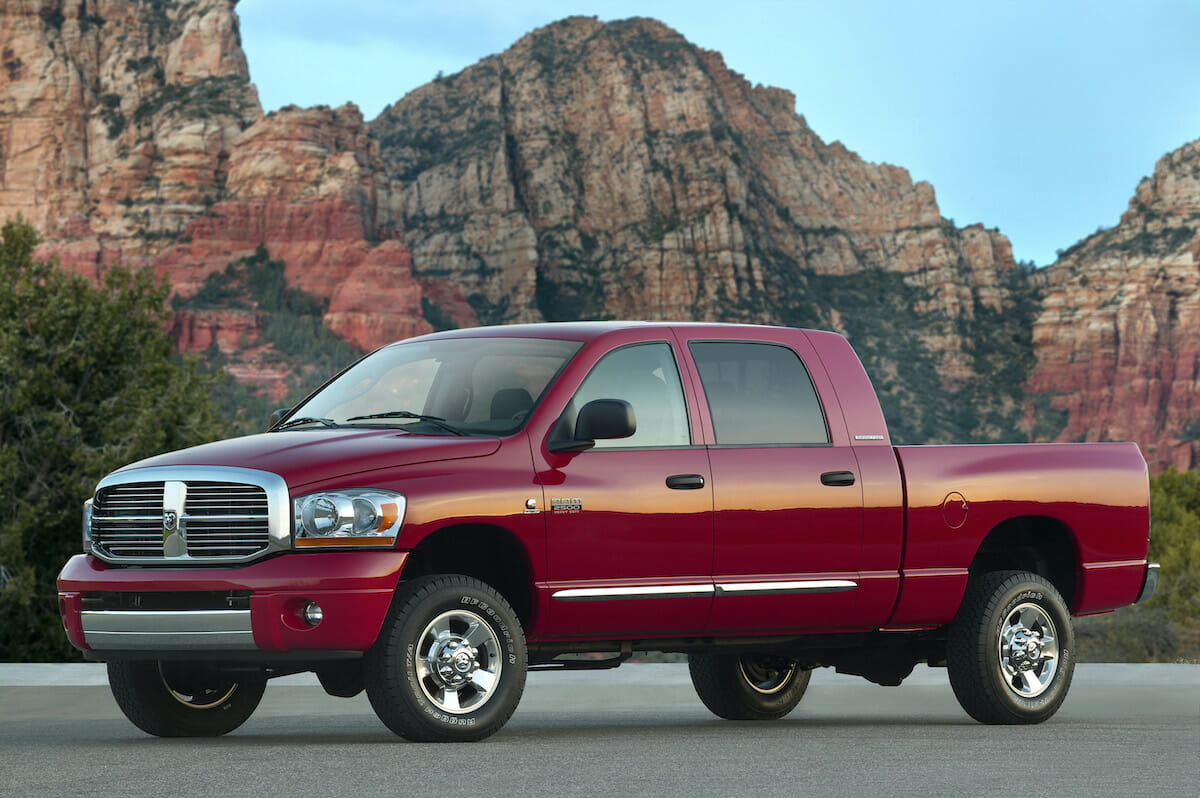
Introduction of the Cummins 6.7L (2007-present)
For 2007, a new 6.7 liter B Series Cummins was introduced in Ram 2500s and 3500s. Both bore and stroke were increased to give the extra displacement. It produced 350 hp and 650 lb.-ft. when paired with the new six-speed 68RFE automatic transmission, and 350 hp and 610 lb.-ft. when mated to the Mercedes G56 six-speed manual. AAM axles replaced the Danas of previous generations.
The 6.7 featured numerous innovations aimed at improving emissions and making additional power. One was a Variable Geometry Turbocharger (VGT). This reduces turbo lag by means of sliding vanes in the exhaust which create optimum back pressure. It also works as an exhaust brake, a very useful feature for towing. Problems with this system have been common on 6.7 Cummins and can be checked for by testing the exhaust brake and making sure it works properly.
The other major mechanical changes at this time were the introduction of two emissions systems, Exhaust Gas Recirculation (EGR) and a Diesel Particulate Filter (DPF). Both of these systems can cause problems that can lead to the truck going into limp mode until a repair is made.
These problems have been seen on trucks with under 100,000 miles, and it should be remembered that Dodge’s factory warranty covers mechanical components up to 100,000 miles, but covers emissions equipment to only 50,000.
Often this equipment has been deleted, even on late model trucks. It should be underlined that removing federally mandated emissions equipment from any vehicle is illegal. Also, while deletion may solve the problem in the short term, it renders any remaining factory warranty void.
In states such as California where there are regular emissions system checks (smog checks) these trucks will not pass and therefore cannot be registered. Issues with the EGR and DPF systems, and their removal, are so common that this is an important issue for anyone considering buying a Dodge Cummins truck.
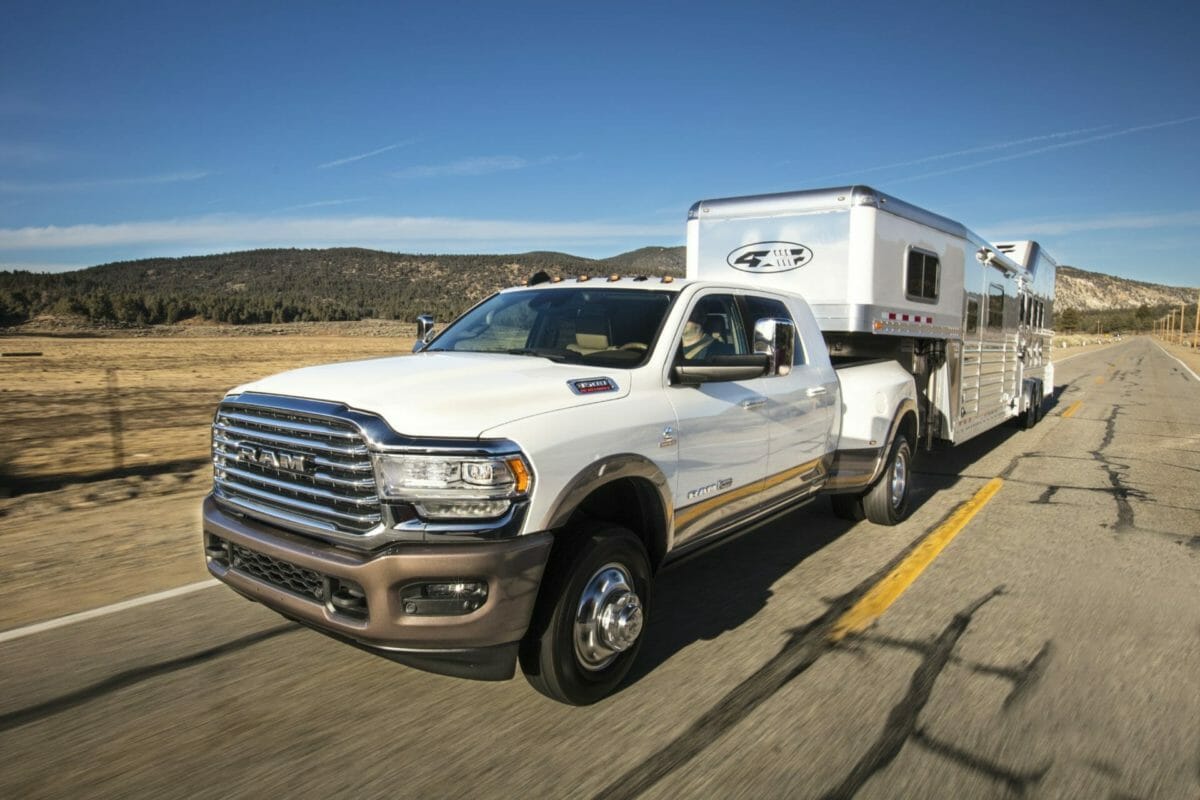
Ram Fourth-generation (2009-present)
The fourth redesign of the Dodge Ram was first seen at the Detroit Motorshow in 2008 and launched for the 2009 model year. The new truck offered a new four-door cab design, new suspension, and Dodge’s novel Rambox storage system.
In 2010, Ram was spun off from Dodge into its own brand. Between 2011 and 2019, only Ram offered full-size pickup buyers a traditional three-pedal manual transmission, a compelling differentiation for many truck buyers.
For 2013, all 2500s now had coil springs, and 2500 and 3500 models now had Electronic Stability Control as standard, with keyless ignition as an available option. New infotainment systems were introduced across the range. Air suspension became available for 2500 and 3500 in 2014, and a smaller, Eco-Diesel V6 was introduced.
The 2018 refresh saw a significant sharpening of the Ram’s infotainment offering, with HD radio, a new 4G wireless hotspot, Apple CarPlay and Android Auto integrations, and an updated user interface.
In recent years the Cummins motor has seen almost annual improvements in performance, especially torque ratings. Between 2010 and 2012, it produced 350 hp and 650 lb.-ft.
Between 2013–2018 six-speed manual Cummins Rams offered 350 hp and 660 lb.-ft. In 2013, a new Aisin ASC69RC automatic transmission was introduced on the most powerful Cummins Rams, which delivered 385 hp and 850 lb.-ft. for the 2013 and 2014 model years. For 2015 power remained the same, but torque increased to 865 lb.-ft.
For 2016 and 2017 torque improved again, now to 900 lb.-ft. For the 2018 model year, 930 lb.-ft. of torque was on offer, and for the 2020 model year, a Cummins Ram with a whopping 400 hp and 1000 lb.-ft. debuted. In a few short years, Cummins Rams have developed a towing capability equal to semi-trucks.
However, these more recent Dodge Cummins trucks have unfortunately been subject to a number of significant recalls. Model year 2016-18 Rams have had a number of issues: one recall was to do with the steering linkage working loose, and another to do with the interconnect switch between the ignition and transmission. The fault allows gears to be selected even if no key is in the ignition.
Also on 2016-18 Rams, the tailgate latches are faulty and subject to a recall. Model year 2017 Rams have experienced water pump issues, leading to a recall. Another recall for 2017s is to prevent possible accidental deployment of the front airbags. Some 2018 Rams have an issue with cruise control potentially not disengaging.
Recalls for 2019 model year Cummins trucks include possible replacement of brake calipers and problems with engine lubrication on startup. The fix here is a software update. The sheer number of recalls around these late-model trucks has to be of concern to any potential buyer.
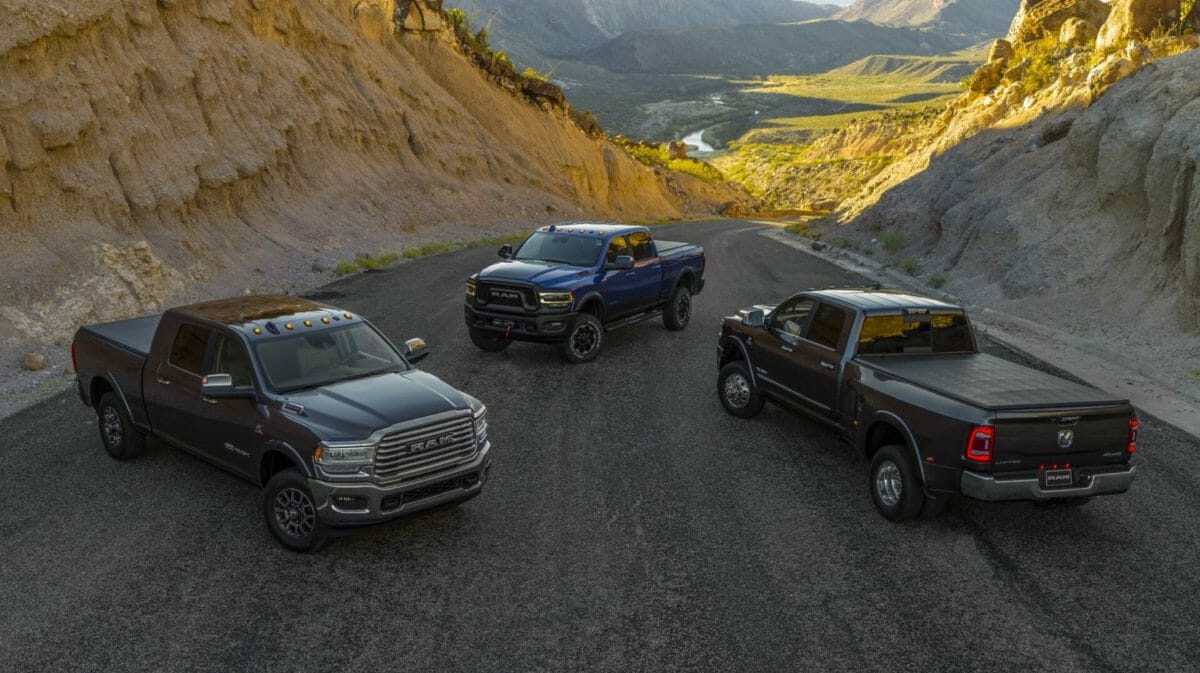
Dodge Cummins Years to Avoid
To sum up, there are not any specific years of Dodge trucks with Cummins motors to avoid. However, care is needed when shopping for this kind of truck. Each generation of Cummins has pros and cons.
The 12-valves have lots of potential for hot rodding, but are old and have small cabs. The 24 valve models represent the best value today because although they are less reliable than the 12-valve, these trucks are at the bottom of their depreciation curves.
The more recent 6.7-liter models have had many recalls, for serious things, like steering arms coming loose and engines not oiling themselves properly. Therefore it is important to make sure the truck you are looking at has had this recall work completed.
With late-model 6.7-liter trucks it is also important to confirm the turbo and exhaust brake are working. You must understand whether the EGR and DPF systems are present and if they are working properly.
Despite these issues, the enormous power and torque available in recent Dodge Cummins trucks plus options like a manual transmission make these trucks a compelling choice.
Photos: Dodge/Stellantis
